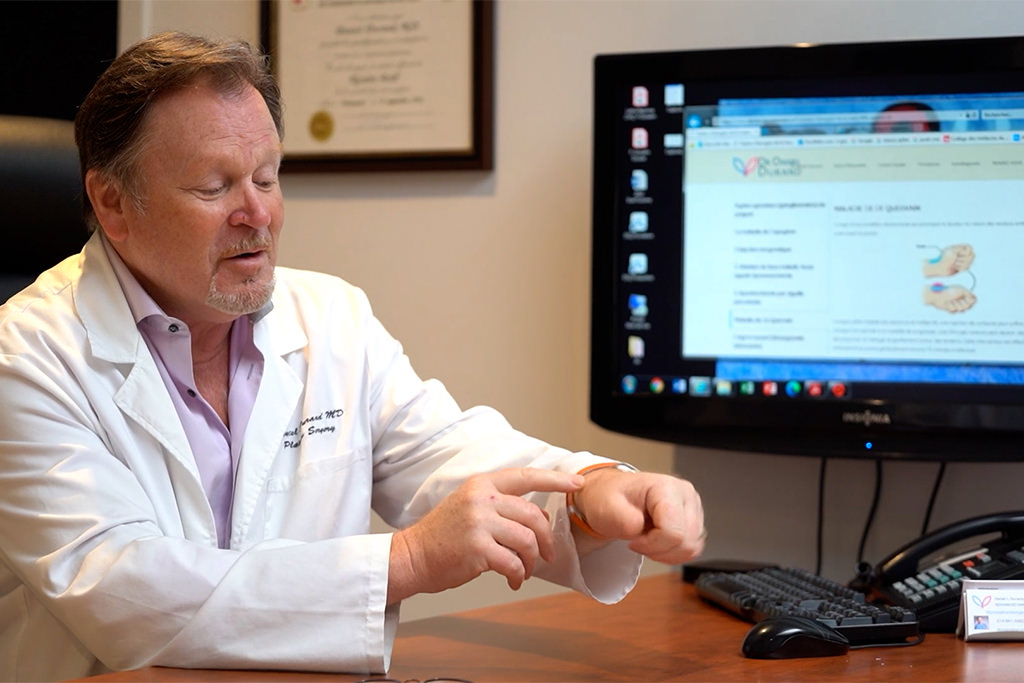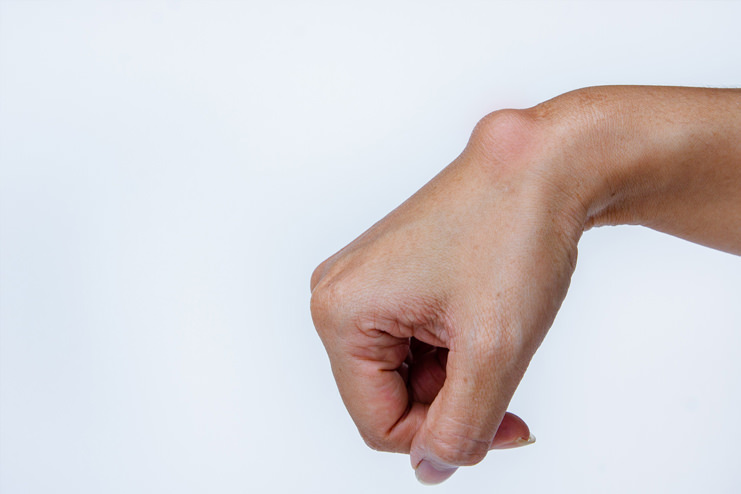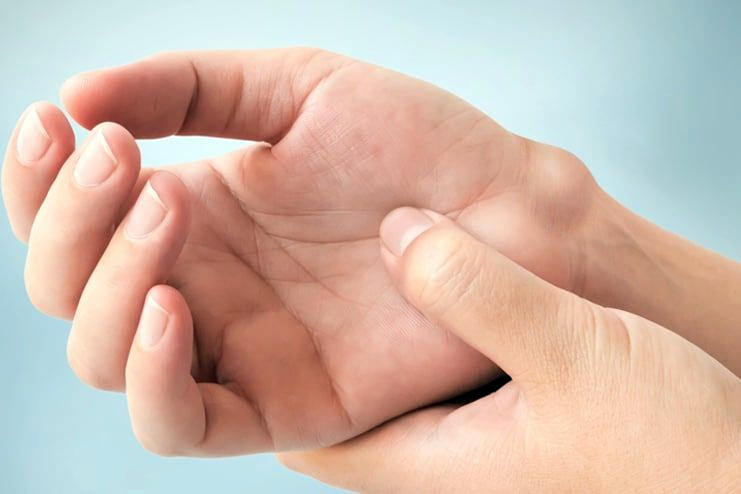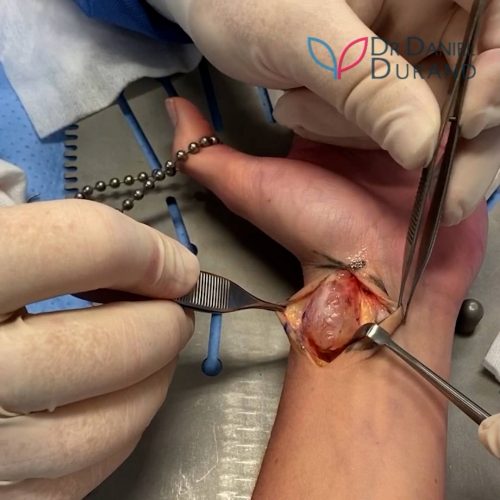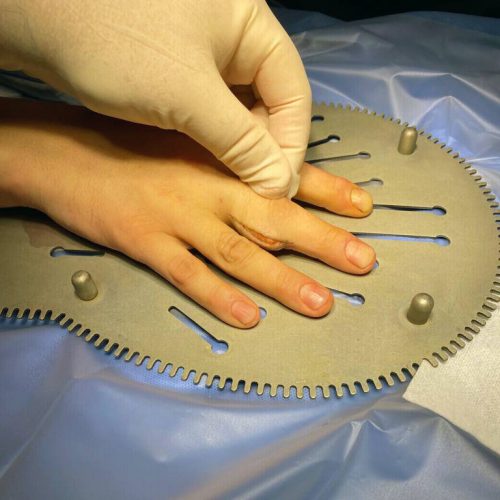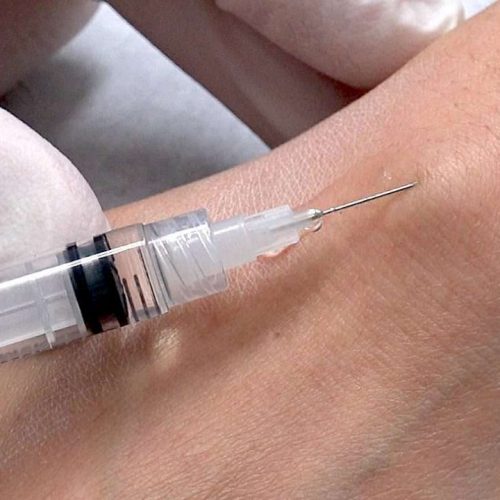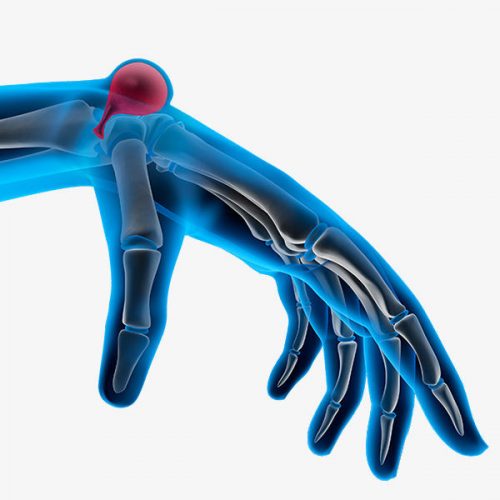

Ganglion Cysts


WHAT IS GANGLION CYSTS?
Ganglion cysts (also called synovial cyst) are noncancerous lumps that most commonly develop along the tendons or joints of your wrists or hands. It is the second most common condition that is encountered in the hand. Ganglion cysts are typically round or oval and are filled with a jellylike fluid. Small ganglion cysts can be pea-sized, while larger ones can be around an inch (2.5 centimeters) in diameter.
Most cases of ganglion cysts do not have any associated symptoms, pain or weaknesses. However, in certain cases this large bump can cause localized pain with movement of the wrist because it pushes on adjacent structures which normally aren’t supposed to be pushed on.
If the cyst is painful, interferes with function, or has an unacceptable appearance, there are several treatment options available.
SYMPTOMS OF GANGLION CYSTS
Most ganglions form a visible lump, however, smaller ganglions can remain hidden under the skin.
The lumps associated with ganglion cysts can be characterized by:
- Location. Ganglion cysts most commonly develop along the tendons or joints of your wrists or hands.
- Shape and size. Ganglion cysts are round or oval and usually measure less than an inch (2.5 centimeters) in diameter. Large cysts, even if they are not painful, can cause concerns about appearance.
- Pain. Ganglion cysts usually are painless. But if a cyst presses on a nerve that pass through the joint it can cause pain, tingling, numbness or muscle weakness.
IF YOU ARE SUFFERING FROM SYMPTOMS OF GANGLION CYSTS AND EVALUATING YOUR TREATMENT OPTIONS, SCHEDULE A CONSULTATION WITH DR. DANIEL DURAND TODAY.
WHAT CAUSES GANGLION CYSTS?
It is not known what triggers the formation of a ganglion. They are most common in younger people between the ages of 15 and 40 years, and women are more likely to be affected than men. These cysts are also common among gymnasts, who repeatedly apply stress to the wrist.
Ganglion cysts that develop at the end joint of a finger — also known as mucous cysts — are typically associated with arthritis in the finger joint, and are more common in women between the ages of 40 and 70 years.
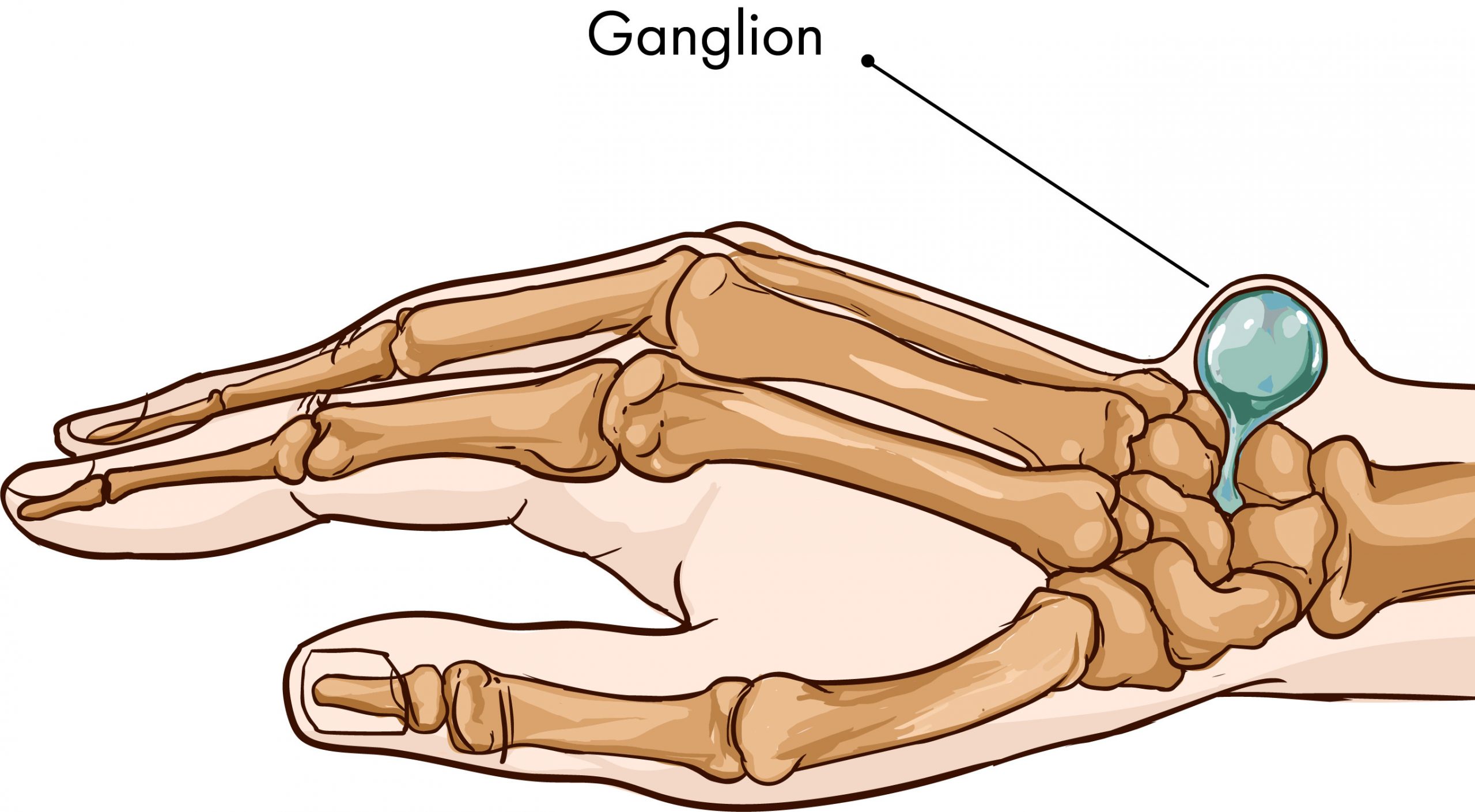
HOW IS GANGLION CYSTS DIAGNOSED?
These ganglion cysts in the wrist are most often diagnosed by history and clinical examination. During the physical exam, Dr. Durand may apply pressure to the cyst to test for tenderness or discomfort. He may try to shine a light through the cyst to determine if it’s a solid mass or filled with fluid.
Dr. Durand might also recommend imaging tests — such as X-rays, ultrasound or magnetic resonance imaging (MRI) — to rule out other conditions, such as arthritis or a tumor. MRIs and ultrasounds also can locate hidden (occult) cysts.
A ganglion cyst diagnosis may be confirmed by aspiration, a process in which Dr. Durand uses a needle and syringe to draw out (aspirate) the fluid in the cyst. Fluid from a ganglion cyst will be thick and clear or translucent.
WHEN SEEKING A DIAGNOSIS OR TREATMENT, IT’S BETTER TO SEE A DOCTOR SOONER RATHER THAN LATER. ONCE A CONDITION IS SEVERE, THE DISEASES ARE MORE DIFFICULT TO CORRECT. EARLY INTERVENTION IS KEY TO AVOIDING PERMANENT DAMAGE. DEPENDING ON YOUR DIAGNOSIS, NONSURGICAL TREATMENT MAY BE AN OPTION.
HOW IS GANGLION CYSTS TREATED?
Ganglion cysts are often painless, requiring no treatment. Dr. Durand may suggest a watch-and-wait approach. If the cyst is causing pain or interfering with joint movement, he may recommend:
- Splint. Because activity can cause the ganglion cyst to get larger, it may help to temporarily immobilize the area with a brace or splint. As the cyst shrinks, it may release the pressure on your nerves, relieving pain. Avoid long-term use of a brace or splint, which can cause the nearby muscles to weaken.
- Aspiration. In this procedure, Dr. Durand uses a needle to drain the fluid from the cyst. However, these are often measures which offer temporary relief.
- Surgery. More often, patients will choose to have the bump removed with minor surgery for both functional as well as aesthetic reasons.
HAND CARE WITH DR DANIEL DURAND
NOT ALL HAND AND WRIST CONDITIONS REQUIRE SURGICAL SOLUTIONS. OTHER TREATMENT OPTIONS ARE AVAILABLE FOR LESS SEVERE ISSUES.IF YOU’VE BEEN EXPERIENCING GANGLION CYSTS SYMPTOMS, SCHEDULE AN APPOINTMENT WITH DR. DANIEL DURAND TODAY!

